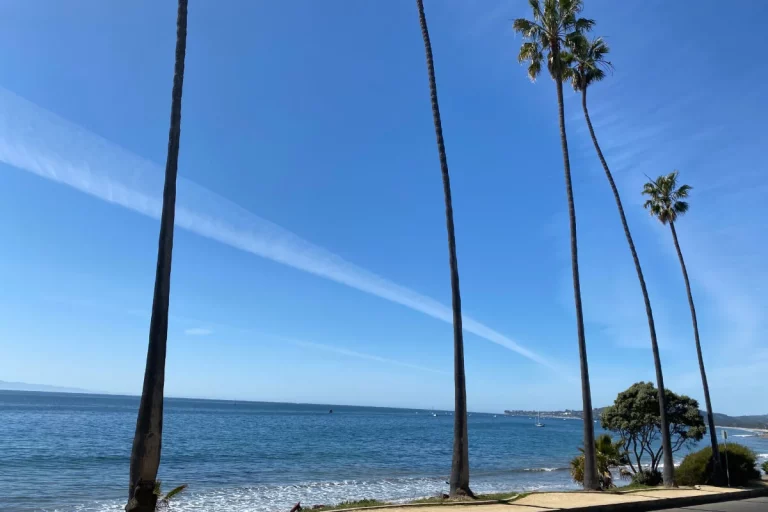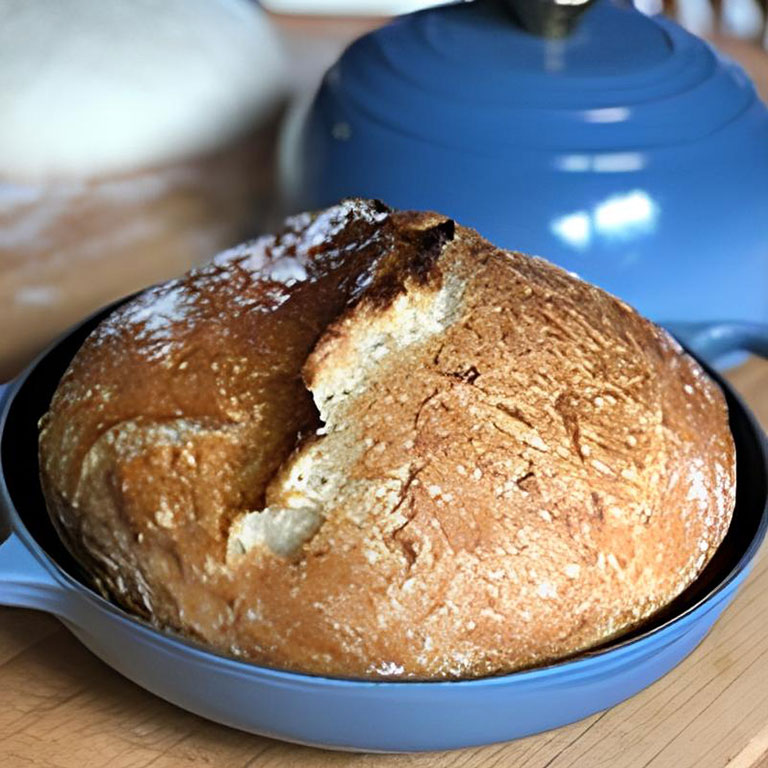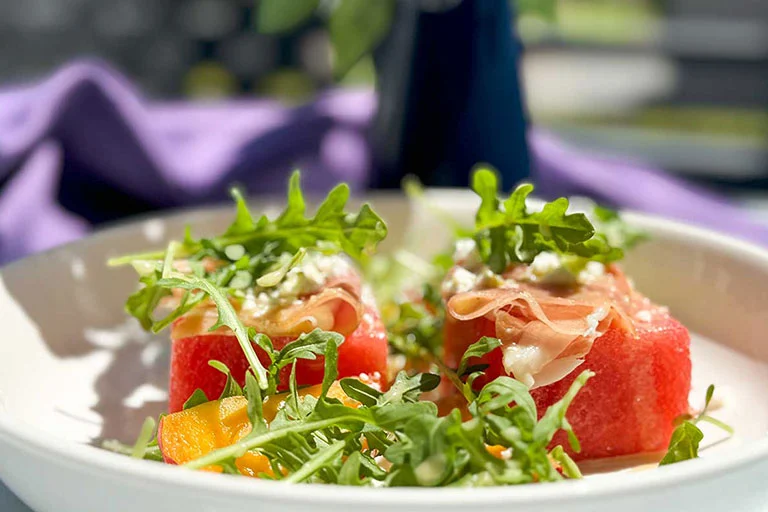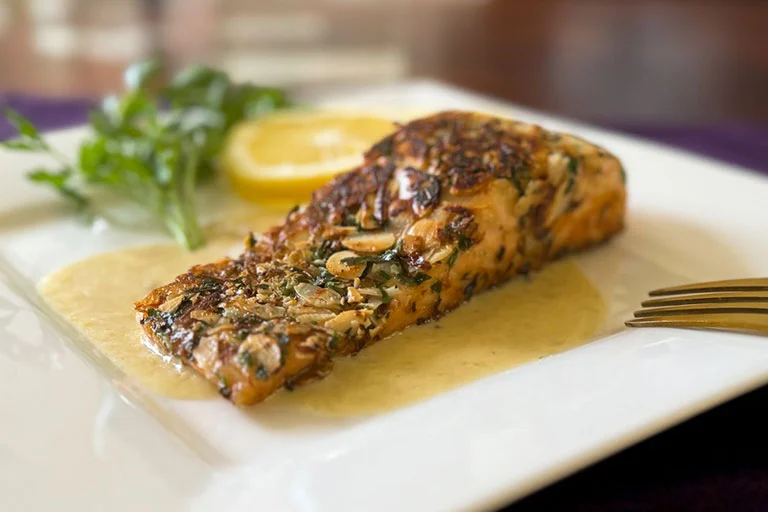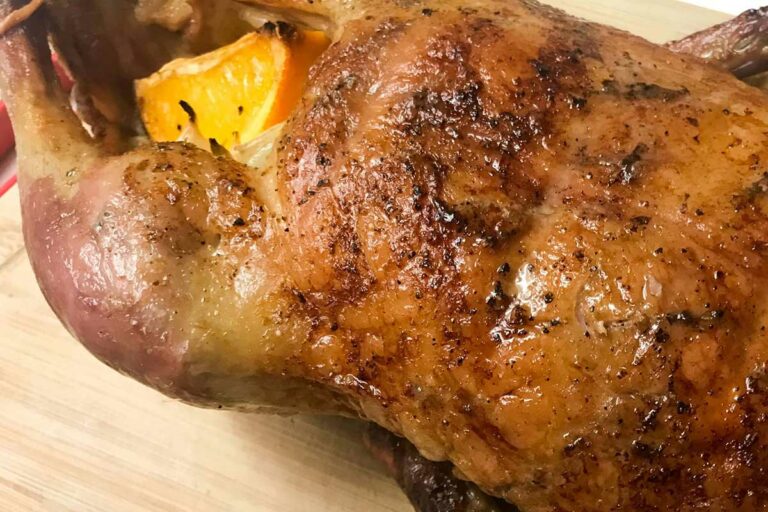
This is one of those old, classic menu items that you rarely see anymore. When I lived in NYC and was just starting to dine out, Duck A L’orange was a regular on menus…a true classic. It was always served with a wild rice pilaf and the skin was super crispy. I just loved it.
Over the years, I attempted to make this dish many times. The sauce was a labor of love and often, just didn’t hit the mark. Getting the skin crispy was a never ending battle and yes, it always seemed way too fatty. I just couldn’t figure out what I was doing wrong
I wound up combining tips from different chefs I knew or worked with to finally get to this recipe…a faster, easier and not quite authentic sauce that tastes fabulous and has become pretty fool proof. And, isn’t that what we all want?
The first tip I got was from watching Martha Stewart prepare a duck. She actually scraped out excess fat from under the skin and discarded that long before cooking…brilliant! Why hadn’t anyone mentioned that before? As soon as I started removing excess fat before working with the duck, I got rid of that unpleasant, thick layer of fat. (Not all of it, just enough to make a delicious tasty duck with crispy skin.)
The next tip I got came years later when I ate at a Chinese restaurant in San Francisco’s China town, and I observed how all the ducks were left hanging to dry a day or two in the fridge uncovered. (Is that where that saying “Hang out to dry” came from? LOL) A waiter told me that helped the skin dry out a bit and get really crispy. Well, I can’t hang birds in my refrigerator BUT I can let them sit a day or two in the fridge to air dry…I just flip them a couple of times. And let me tell you, it works! Crispy skin every time.
The sauce in this recipe came from a combination of sauce recipes I’ ve used over the years and the result is a fabulous orange glaze and sauce that eliminates what seemed like endless steps to make. I still only make this dish on special occasions because it does take work, but the short cuts I used in preparing the sauce save a ton of time and guarantee great results every time. FYI: I will also make this sauce and use in on chicken thighs or even as a dipping sauce for chicken fingers (shhh, don’t tell anyone). You just won’t have the drippings from the duck to work with so use a little olive oil to sautee your onions and you will be good to go. Everything else will stay the same but you’ll ignite your orange liqueur in a saucepan rather than the used roasting pan.
I have a fondness for Wondra flour…recommended by a chef a long time ago since it is a finer grade of flour and doesn’t get lumpy in gravy as easily as regular all-purpose flour. No Wondra? No worries. Regular flour works just fine.
One note on the rice: use your favorite rice blend and cook per the package instructions. Add the chopped, toasted nuts and mix. Serve on the side. Steamed broccoli or green beans would be a great addition.
While it takes a little effort, if you like duck, this one is a keeper.
To get stared, take your thawed duck and rinse it. Pat it completely dry with paper towels and put in a casserole dish just big enough to hold it. Put in the refrigerator for 24 – 48 hours uncovered. This will dry out the skin and make it extra crispy when roasted.
When you are ready to work with the duck, remove all the excess fat and skin hanging off the duck. At the neck, and bottom, you can remove any excess fat right under the skin. Using a spoon, just scrape out excess. Discard all of that or save. Cooking in duck fat is delish!
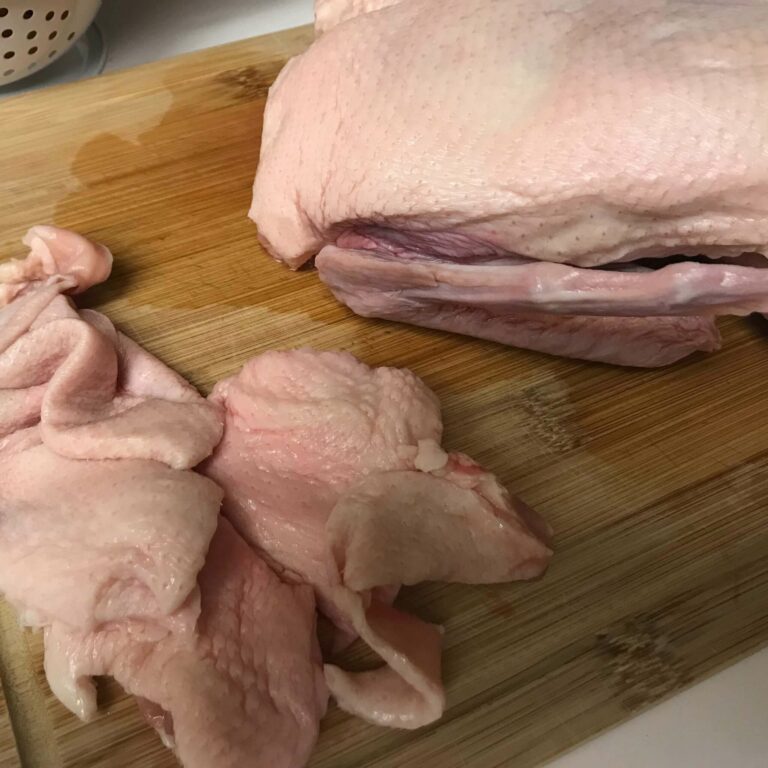
Pat the duck dry again with paper towels. Cut little slits all over the duck. Do not pierce through to the meat. You just want to cut through the skin and fat layer. When roasting, this will allow excess fat to escape and naturally baste the duck plus render out that excess fat.
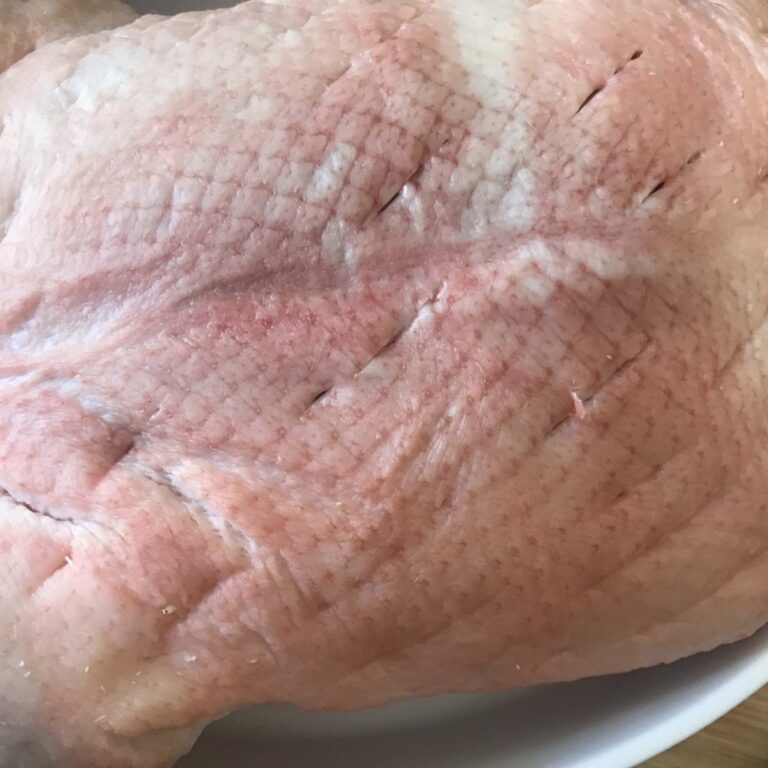
Liberally season both the inside and outside of the duck with salt and pepper. Fill the cavity of the duck with the chopped celery, two onion quarters and 4 quarters of the orange. Tie the legs with kitchen twine and place the duck on a rack sitting inside a roasting pan. Do spray the rack to keep the duck from sticking when you are ready to remove it.
Put the roasting pan in the a preheated 400 degree F. oven. Roast for 15 minutes.

After 15 minutes, lower the heat to 350 degrees F. and roast for another 45 minutes. After 45 minutes, carefully turn the duck over and let it continue roasting for another 35 minutes. Flip one more time and let it finish cooking for 15-20 minutes until golden brown.
Once the duck has rendered enough fat (about 1 hour into roasting time), spoon two tablespoons of the duck fat into a saucepan.
Use that to cook the sliced onions (about one half an onion) over medium-high heat. Saute for about 5 minutes until the onions are translucent and starting to brown. Sprinkle on the Wondra and stir into the onions.
Meanwhile, in a large measuring cup, combine the orange juice, marmalade, and honey. Add that into the onions and bring to a boil over high heat. Lower the heat to medium and reduce sauce until thickened (about 20-25 minutes).
Pour the sauce into a blender and puree until smooth. Taste and add salt and pepper to taste. Blend again…taste again. Pour into a small saucepan and keep warm until time to serve.
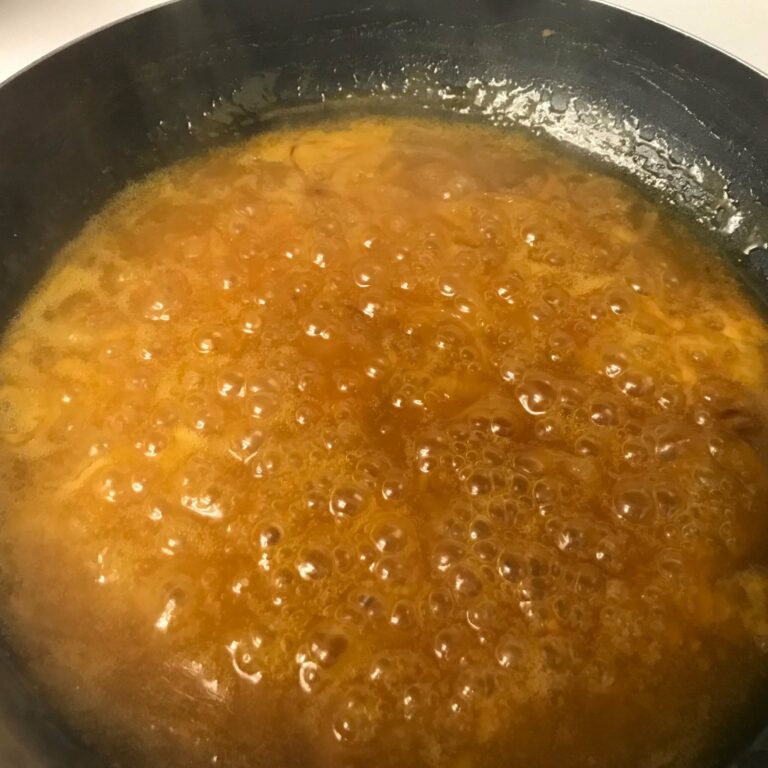

As always, I recommend you use a thermometer to check the temperature of the duck. Don’t guess. Insert it into the thickest part of the thigh (do not touch the bone). You want the internal temperature to 180 degrees F. Remove the rack with the duck when done. Cover with foil and let it sit while you make the sauce. Remove all but two tablespoon of the fat in the pan.

On top of stove, place your roasting pan over two burners on medium high heat. Pour in your orange flavored liqueur and carefully ignite with a long match or fire starter. Scrape up all browned stuff from the bottom of the pan. When flames subside, pour in the warm, reduced orange sauce and stir to blend. Keep warm.
To serve, cut duck in half using sharp scissors or poultry shears. Remove backbone by cutting along one side and then the other, then cut along breastbone. If serving 4, cut each half into breast and leg sections.
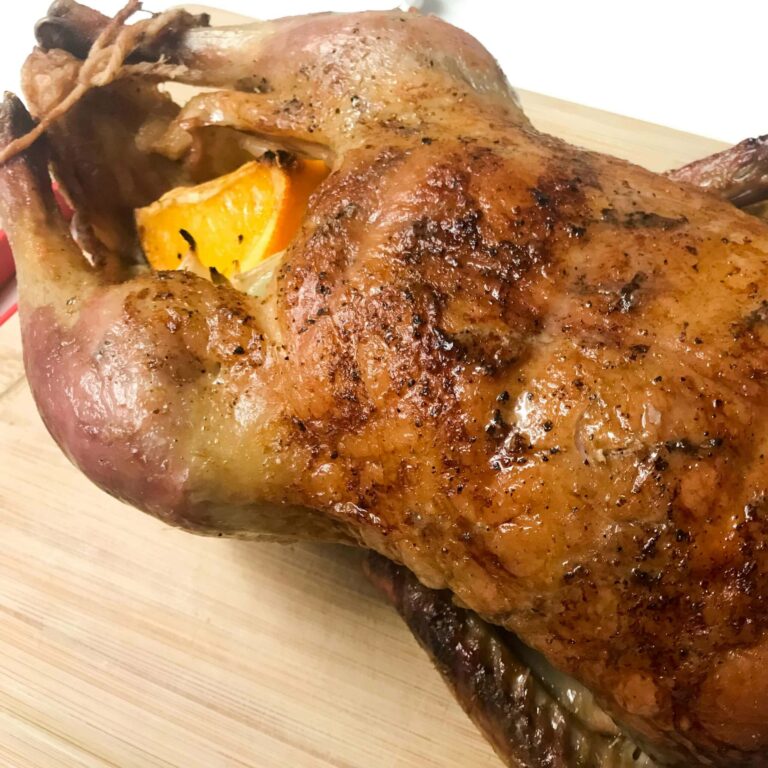
To plate and to be sure your duck stays crispy, spoon the sauce on a plate first and top with the duck portion. Spoon a 1/2 – 1 cup of the wild rice pilaf that has been mixed with the pecans next to it. Garnish with the fresh orange rounds or wedges and a sprinkle of chopped chives. Serve additional sauce on the side. Enjoy. Do you enjoy duck? Be sure to try my Duck with Cherry Sauce recipe.
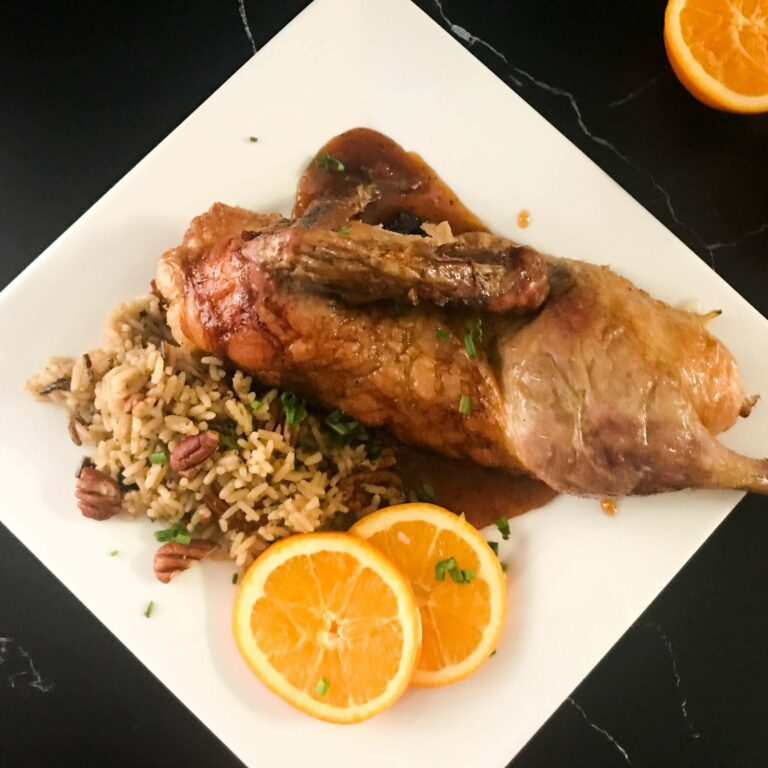
If you liked this recipe and want to try other delicious, poultry dishes that I’ve paired with fruit, be sure to try some of these:
Chicken Thighs with Figs and Thyme
Apricot Cornish Hens with Pecan Stuffing
Fig & Walnut Stuffed Turkey Breast
Blackberry Glazed Chicken Legs with Ginger and Lime
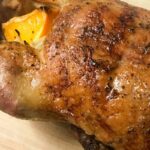
Duck A L’Orange – My Way
Nutritional information is only an estimate. The accuracy of the nutritional information for any recipe on this site is not guaranteed.
Ingredients
SAUCE
- 2 Cups Fresh-squeezed orange juice
- 6 Oz. Sweet orange marmalade
- 1/4 Cup Honey
- 1 5-6 Lb. Whole duck, thawed if frozen, giblets and excess fat removed and discarded
DUCK PREPARATION
- Kosher salt and freshly ground black pepper to taste
- 1 Large onion, 1/2 thinly sliced & 1/2 quartered
- 1 Tbsp. Wondra flour
- 1 Navel Orange, cut into quarters
- 1 Celery stalk, cut into 3-4 pieces
- 1/4 Cup Orange flavored liquor (triple sec or Cointreau)
FOR SERVING
- 2 Cups Cooked Wild Rice pilaf
- 1/4 Cup Pecans, chopped
- 1 Orange, cut into wedges or rounds
- Chopped Chives, optional
Instructions
- Take your thawed duck and rinse it. Pat it completely dry with paper towels and put in a casserole dish just big enough to hold it. Put in the refrigerator for 24 – 48 hours uncovered. This will dry out the skin and make it extra crispy when roasted.
- Combine orange juice, marmalade, and honey in a measuring cup and put to the side.
- Preheat oven to 400 degrees. Have a roasting pan with rack in it set up and sprayed with cooking spray to help keep the duck from sticking.
- Remove duck from the refrigerator and cut little slits all over the skin (do not pierce the meat of the duck). Liberally season both the inside and outside of the duck with salt and pepper. Fill the cavity with the celery, the two onion quarters and 4 quarters of the orange. Tie up the legs with kitchen twine and place the bird on the prepared rack in the roasting pan.
- Place the roasting pan in the preheated oven for 15 minutes. Then, lower the heat to 350 degrees and roast for another 45 minutes.
- At that point, carefully turn the duck over and let it continue roasting for another 35 minutes. Flip one more time and let it finish cooking and getting golden brown for another 15 – 20 minutes.
- Meanwhile, once the duck has rendered some fat (about 45 minutes to an hour into the roasting time) spoon 2 tablespoons of the duck fat into a saucepan. Heat it over medium-high heat and add the sliced onions (about one half an onion). Sauté until are translucent and starting to turn a light brown, 5 to 6 minutes. Sprinkle on the Wondra flour and cook for one more minute to incorporate the flour into the onions. Pour in the marinade and bring to a boil over high heat. Lower the heat to medium and reduce sauce until thickened, 20 to 25 minutes. Pour the sauce into a blender and puree until smooth. Taste and add salt and pepper to taste. Blend again…taste again. Pour into a small saucepan and keep warm until time to serve.
- When the duck is finished cooking, remove pan from the oven. Check the temperature of the duck using a meat thermometer. The internal temperature should be 180F at the thickest part of the leg and thigh joint. Remove the rack with the duck and set to the side. Cover the duck with tinfoil while you finish the sauce. Discard all but a couple of tablespoons of fat from roasting pan.
- On top of stove, place your roasting pan over two burners on medium high heat. Pour in your orange flavored liqueur and carefully ignite with a long match or firestarter. Scrape up all browned stuff from the bottom of the pan. When flames subside, pour in reduced orange sauce and stir to blend. Keep warm.
- To serve for 2: Cut duck in half using sharp scissors or poultry shears. Remove backbone by cutting along one side and then the other, then cut along breastbone. For 4: Cut each half into breast and leg sections.
- To plate and to be sure your duck stays crispy, spoon the sauce on a plate first and top with the duck portion. Spoon a 1/2 – 1 cup of the wild rice pilaf that has been mixed with the pecans next to it. Garnish with the fresh orange rounds or wedges and a sprinkle of chopped chives. Serve additional sauce on the side. Enjoy.


